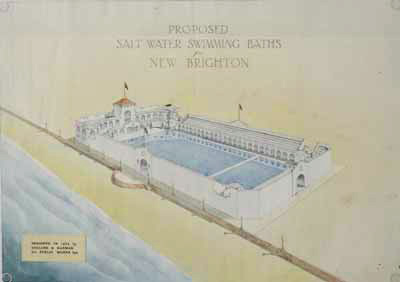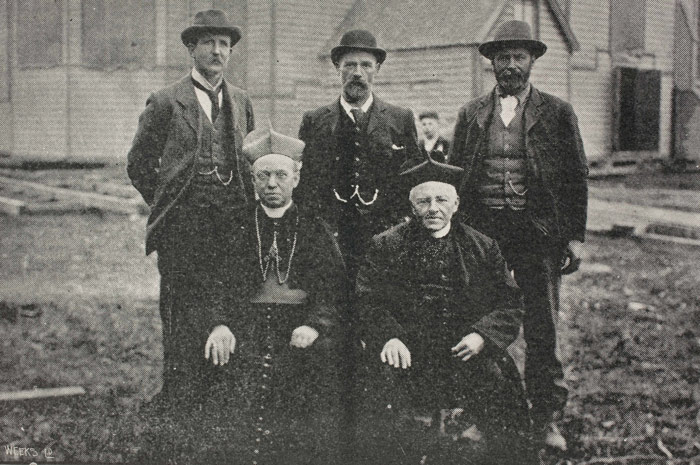Architecture was not widely regarded as a profession throughout Europe and America until the 1850s, and was still slowly developing into a separate and specialized skill set in the 1870s when the construction of Canterbury College began. Prior to the 1800s, architects were usually chief workmen on the building site, and would in essence design as required while construction went on around them. Classical modes of building were widely understood and adhered to in the Western world. As a result architectural drawings were small and utilitarian, usually did not include perspective or aesthetic elements, and were not often retained once a building was complete.However, after 1800 a shift began to happen when buildings became more complex in design and construction.

Colonial Architects

The Collins and Harman design for the Proposed Salt Water Baths at New Brighton, 1928. The drawing places the building in the landscape, and uses colour and perspective to enhance the design.
There was a gradual move away from the understood classical modes to new styles, including Gothic Revival. Once these new styles of buildings were introduced, drawings became more important to the process. Clients needed to see drawings to understand designs that they may not have been familiar with, while builders could not rely on past experience to get them through the construction process. The result was that architects gradually began to work more as designers rather than builders, and their drawings evolved to increasingly include aesthetic elements.

R.D. Harman and J.J. Collins pose with Mr Swanston, Bishop Grimes, and Father De Chesnais, c.1900. Developing good relationships with clients would have been essential to survival.
As the profession was still a developing one, the term of architect was not regulated in New Zealand at the time Canterbury College was founded. Anyone could in fact call themselves an architect and set up in business. This resulted in an increased competition for contracts, which meant that forming long standing relationships with potential clients would have been highly useful. For example, when William Armson returned to New Zealand in 1862, he was happy to be appointed as an architect to the Provincial Government of Otago on £300 per annum, even though the salary offered was considered low, because of the security such a position offered. It is little wonder then that firms like Armson and Collins were keen to establish a good relationship with Canterbury College, and maintained that relationship over much of the firm’s 123 years in practice.